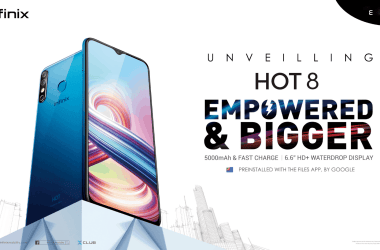Until a few months ago, if you plan on using Instagram for marketing and be successful at it, you either had to develop a huge following manually or expend a lot of resources on media to get a reckoning with the photo sharing network.
Instagram has been conducting some test on its advertising model since 2013 but the chance was only available to major brands like Waitrose, Cadbury and Rimmel. Now, Instagram has opened it photo feeds to advertisers: last month, they made public, the launch of an API for its ad system, enabling brands to use third party ad tech sellers to purchase and manage Instagram ad format on self-service terms.
While Facebook, Instagram’s owner and their advertisers are definitely going to cherish this new commercial opportunity, photo-crazy users may not be excited about it.
The benefit of this advertising model is enormous: interactive and visual formats and data-centric management. Businesses can now precisely target and reach younger clients who are becoming less interested in Facebook, and can do so exclusively on mobile devices. Instagram users are growing by 18 percent every year and also has two times the proportion of 16-24 year olds as Facebook, with more socially active users of the same age bracket
The super-quality video and image ad setup can cut-through on the newsfeed and are engaging, allowing business to drive direct sales, app installs or further interaction with the product or campaign. These formats were not available previously on mobile devices outside of Facebook. Brands can now achieve media efficiencies too, including targeting, automatically managing spend, offers and outcomes for campaign with other digital media like Facebook ads. In other words, advertisers should and will flock to Instagram
Commercialization of social networks is usually met with a degree of outcry, as with Facebook’s introduction of newsfeed ads. That happened a couple of years ago when Instagram was forced to assure users who nursed the fear their photos would be made available for advertisers to re-use. Before now, Instagram was a much revered creative and social network, from both parents and adverts.
However, users should not bother much about their platform being contaminated. And brands should not worry about defecting followers or decreasing ad response rate. A lot of time has been spent by Instagram in perfecting its advertising model, not only for advertising effectiveness but also for users’ appetite.
The last time a company did something similar was when YouTube experimented on it skippable video formats. Both companies have the fear that one wrong step could result to their user base defecting to the next photo sharing app.
Instagram ad formats have a common “native’’ outlook to in-stream marketing, displaying as regular photo posts that happened to be promoted into users’ feeds. Instagram will regulate volume, creative integrity, frequency, making sure that users are not spammed with offer-centric advertising.
Advertisers will have to be careful too. Like Facebook, Instagram could finally become a cost-per-action dominated platform, with costs soaring rapidly if ad creative is not effective. This means it has to be pleasing, relevant and engaging to Instagram’s users.
If you consider it properly, Instagram ads are really far less intrusive as YouTube’s TrueView. Jamie Tedford, CEO of Brand Networks, which placed some of the first API- purchased ads said, “It’s a user ecosystem where you are part of the discussion and not just disruptive to it”.
The new ads will afford both marketers and users what they desire by introducing action-oriented formats. Buttons in the Instagram ads will invite users to LEARN MORE, SIGN UP, SHOP NOW or INSTALL NOW. This does not only touch every point of sales funnel, it also enables users to do more without forfeiting the experience they are after.
The marketing potentials for brands are just too great: Facebook-style date-centric targeting with the usual visual appeal of vogue all focused on young and socially active users that hasn’t been accessible since the early days of Facebook. As long as brands produce relevant, targeted and result- focused advertising, it should be a harmonious relationship for this group of users and businesses.
About The Contributor
Idowu Akinrelere is a Digital Marketing Strategist at Cliqedge Limited. Self proclaimed growth hacker, tech junkie, Co-founder of MailCliq, AudioTitan and ExclusiveDEALS. My friends call me “Shankorella” meaning “Small But Mighty”.
Facebook: https://www.facebook.com/idowu.akinrelere
Twitter: https://twitter.com/shankorella
Website: http://cliqedge.com/
As an Amazon Associate, TechCity may earn a small commission if you shop these products.
















